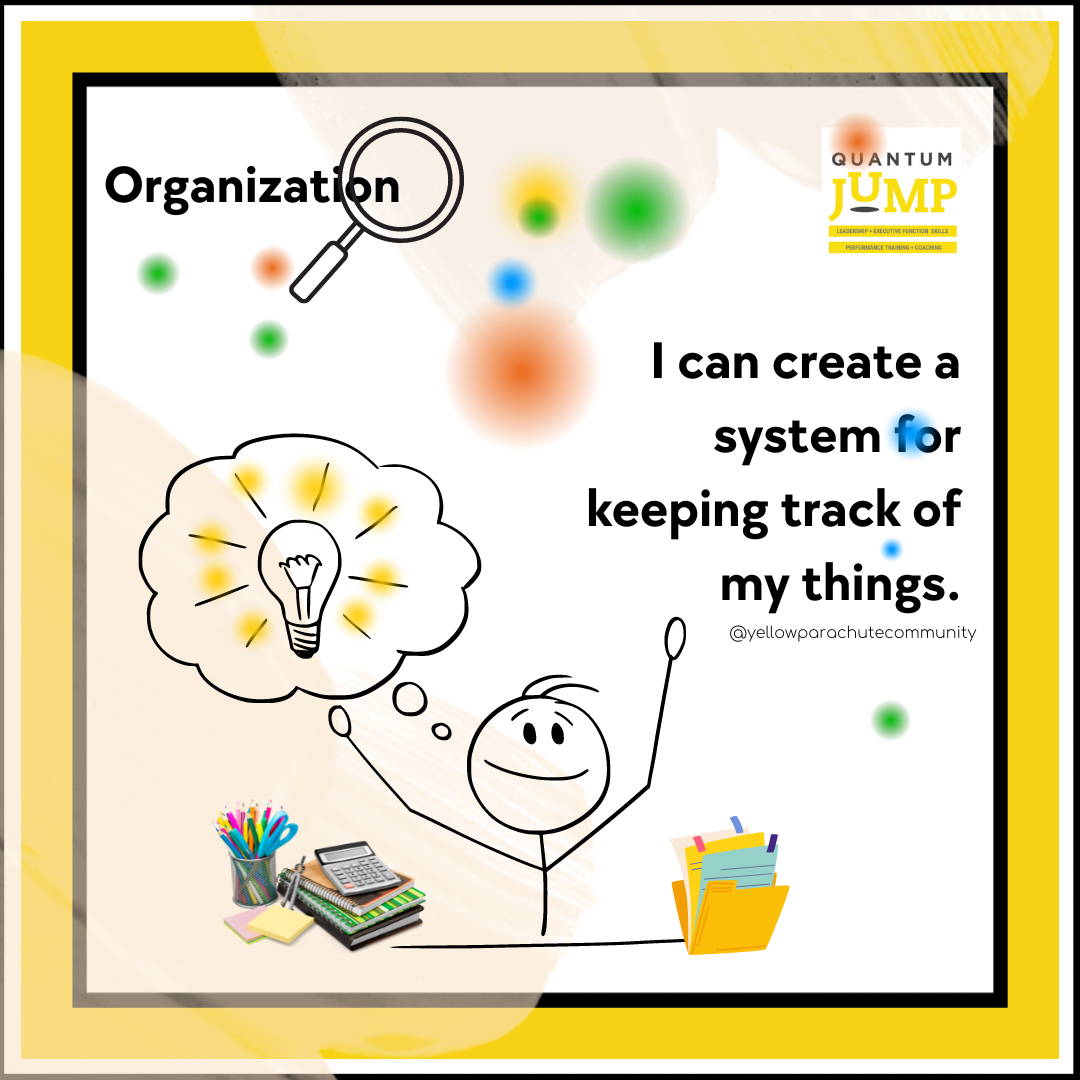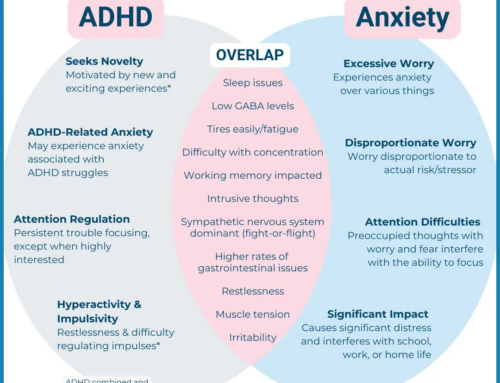Living with ADHD can feel like running uphill both ways, every-day, when it comes to activating executive function skills to get things done. However, there’s a powerful tool that can help: the glorious reframe. This mind-opening strategy allows you to shift your perspective and transform negative thinking patterns into positive ones, ultimately enhancing overall well-being while you practice checking items off your to-do list.
Understanding the Power of Reframing
Open your mind to the thought that rather than a fluffy, feel-good-word, reframing offers a science-based way to take control of your life. It helps you succeed even when your brain doesn’t show up to help you the way you want it to. Reframing is a cognitive technique that involves changing the way you perceive and interpret situations, experiences, or behaviors. It can be a game-changer in how you approach your challenges. If the word “reframe” doesn’t grab you, no problem: choose a different one. I’ve heard people say, “flip the switch,” “challenge negative thoughts,” and “switch thought-trains.” Or you can use your creative brain to come up with your own!
From Deficit to Difference
It’s easy to fall into a pattern of thinking of your ADHD symptoms as a character deficit, personality flaw, or something to be fixed. You may have gotten such messages in the past, even unintendedly, from parents, other students, teachers, or employers. You may also be sensitive to feeling “different” and interpret help as criticism. These are common, frustrating occurrences for humans with ADHD, but they don’t have to define you. Reframing offers a new way of thinking and processing information that reopens the possibilities for you to be who you are. The shift in energy and emotions can have a profound impact on your self-esteem and motivation.
What if it All Works Out?
Mel Robbins, author of The High Five Habit, The 5 Second Rule and Let Them, offers a powerful reframe with the question, “What if it all works out?”
Mel Robbins’ question, “What if it all works out?” serves as a transformative mindset tool aimed at shifting negative thought patterns. Robbins emphasizes the common tendency to become trapped in a “what-if loop,” where individuals fixate on potential failures and negative outcomes, leading to anxiety and inaction. This mindset can paralyze decision-making and prevent personal growth.
Robbins proposes a simple yet profound flip in perspective: instead of asking “What if this goes wrong?” individuals should consider “What if everything works out?” This shift encourages a more optimistic outlook, allowing people to envision positive possibilities and outcomes. By adopting this “high-five attitude,” Robbins suggests that individuals can empower themselves to embrace change and take risks, ultimately leading to a more fulfilling life.
The Science: If you’re one who needs to know WHY:
Emotional regulation is a major difficulty in humans with ADHD. There’s often a torrent of emotions below the surface of ADHDers’ actions; positive emotions fuel motivation and task initiation, while negative emotions create discomfort, irritability, procrastination, and distraction.
When you switch from a negative thought to a positive thought, several important changes occur in your brain:
- Neurotransmitter shifts: Positive thoughts decrease cortisol levels and increase the production of serotonin and dopamine. Serotonin creates a feeling of well-being, while dopamine is associated with the brain’s reward system.
- Prefrontal cortex activation: Positive thoughts enhance activity in the prefrontal cortex, leading to improved mental functions such as creative thinking, cognitive flexibility, and faster processing – key executive functions!
- Neuroplasticity in action: The brain forms new synaptic connections, reinforcing and generating new neural pathways associated with positive thinking. This process of neuroplasticity allows the brain to adapt and rewire itself.
- Attention span widening: Positive emotions broaden our span of attention, changing our perception to focus more on “we” instead of “me.”
- Improved cognitive function: Positive thoughts enhance the brain’s ability to process information, pay attention, focus, analyze data, and solve problems more quickly.
- Decay of negative pathways: As you consistently choose positive thoughts, the neural pathways associated with negative thinking begin to decay due to lack of use. This process, known as synaptic pruning, helps reinforce the positive neural connections.
- Enhanced brain coordination: Negative thoughts can slow down brain coordination and hinder creative ability, while positive thoughts improve overall brain function.
- Stress reduction: Positive thinking helps reduce stress, increasing your overall health and longevity.
By consciously practicing positive thinking, you can create lasting changes in your brain’s structure and function, ultimately leading to improved emotional well-being.
Embracing Unique Strengths to Harness the Positive
People with ADHD often possess incredible creativity, energy, and capacity for out-of-the-box thinking in addition to having difficulty managing emotions, getting started, and prioritizing time. The strategy of reframing helps you use strengths to creatively remove obstacles. This is where some of you may start to roll your eyes: we’re not sugar-coating or pushing weaknesses down but mindfully focusing on alternatives. I challenge you to stop eye rolling and start flipping the switch!! …continue reading to influence a shift in your mindset. You’re the one who gets to decide how you think about your life!
Practical Reframing Techniques for Executive Function Skills
Let’s explore how we can apply The Glorious Reframe to three common Executive Function challenges:
Time Management
Negative frame: “I’m always late and can’t manage my time.”
Positive reframe: “I have a flexible sense of time that allows me to fully immerse myself in tasks. With some structure and tools, I can help myself “see my time” to manage my energy productively.”
To Try:
- Most importantly: experiment with what works best. There are so many different ways to manage time; the best ones are the ones that work for YOU.
- Walk through your day – literally. Start at the beginning of your day, and take one step forward for each hour, naming your activities as you go.
- As much as possible, try to do the same types of activities at the same time each day. Your brain and body will expect it!
- Ask for help from an accountability buddy in estimating how much time each task will take. Then plan your timing, building in “just in case” window.
- Instead of writing an exact time that you’ll do an activity, set up a window of time. As long as you complete it “in time,” you’re on track! Build in time for fun.
- With your kids: develop a simple before school and after school routine that can be the same every day, with slight variations as needed.
Organization
Negative frame: “My space is always a mess. I’m so disorganized.”
Positive reframe: “My creative mind sees potential in many objects, and sometimes I’m afraid I will forget where they are. I can develop systems that work with my unique way of thinking to create an environment that helps me feel more organized.”
To Try:
- Choose ONE space that makes the most difference for you, and set it up the way you want it. For example, your books, your vanity, your desk surface.
- You may need to try a few different set-ups, but commit to finding what works, and set a routine to maintain it. This is practice.
- Organize by physical order in which you use your materials, color, shape, size, whatever you find satisfies your critical eye or creative mind.
- What would it be like to “have less stuff?” Do a trial run by putting things in a box that you don’t use every day. Revisit after a week.
- Try labels, pictures, or clear containers, if you’re worried you’ll forget what you’ve organized!
Task Initiation
Negative frame: “I can’t ever get started on important tasks.”
Positive reframe: “I have a gift for generating ideas. By understanding why I can’t get started, I can harness my creativity to solve it and make progress.”
To Try:
- Getting started can be tough for many different reasons. What’s the root cause of your foot dragging?
- Too many steps? Wanting to do it perfectly the first time? Not sure what to do? Feel like it’s going to take forever?
- This is a great time to use the phrase: THE OBSTACLE IS THE WAY.
When you figure out exactly WHY you are having trouble getting started, you can concentrate on solving that problem, and pulling in someone to help, rather than spinning your wheels trying to get traction.
For example:
- If a project seems tedious or unclear, start at the end. Sketch out – no words – what the finished product will look like. You can use a simple box to represent a paragraph. Then from the finished product, move one step back: what would you need to do one step before it?
- If you’re daunted by how long you think something will take, look at it right away. Ask for help in estimating how long each step will take and planning when you will do it.
- If perfectionism is holding you back, schedule a conference with your teacher or a mentor to get a rough first draft out right away. You’re dusting off the cobwebs to get to your true ability.
Words of Encouragement and Call to Action!
Reframing offers a powerful mindset shift for individuals with ADHD, enabling them to transform challenges into opportunities for growth and learning. By adopting a positive perspective, people with ADHD can cultivate self-compassion, celebrate small victories, and focus on their efforts rather than just outcomes.
This positive mindset helps in challenging negative thoughts, reducing self-doubt, and boosting self-esteem. As a result, you can more effectively harness your executive function skills, such as planning, organization, and time management, to tackle tasks and achieve your goals. By viewing setbacks as stepping stones and embracing a growth mindset, your can improve your ability to initiate tasks, maintain focus, and persevere through challenges, ultimately enhancing your productivity and overall well-being
What resonates with you about The Glorious Reframe? Try it TODAY!
Yours in the journey,
Cara











